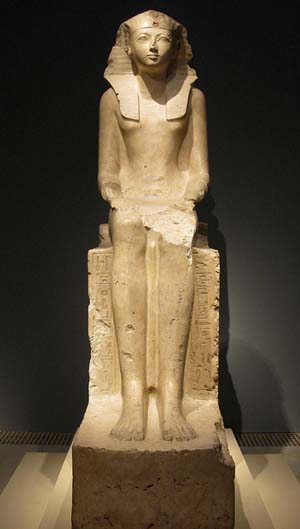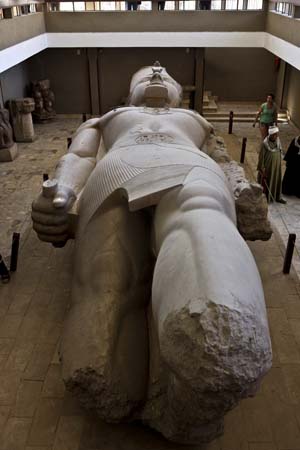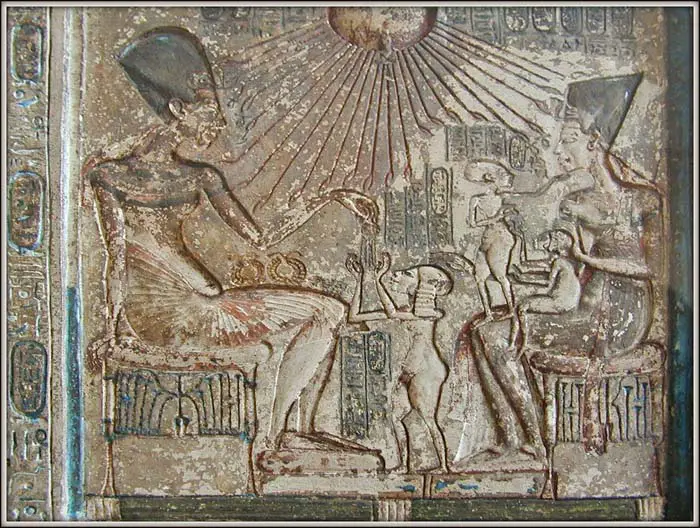The New Kingdom
Time Period
The New Kingdom lasted from about 1550 B.C. to 1070 B.C. and it included the 18th, 19th and 20th dynasties.
First Pharaoh
The First Pharaoh of the New Kingdom and the 18th dynasty was Ahmose. He reigned from 1550-1525 B.C. He successfully drove the Hyksos from Egypt, and also invaded Palestine and advanced into Nubia. He restored temples that had long been neglected and erected chapels in honor of his family. When he died, a prosperous Egypt was left after his reign.
 © rocor – Statue of Hatshepsut
© rocor – Statue of Hatshepsut
Dynasties/Rulers
18th Dynasty Rulers:
- Ahmose
- Amenhotep I
- Thutmose I
- Thutmose II
- Hatshepsut
- Thutmose III
- Amenhotep II
- Thutmose IV
- Amenhotep III
- Amenhotep IV(Akhenaten)
- Smenkhkare
- Tutankhamun
- Ay
- Horemheb
 © Cliff Hellis – Ramses II, Memphis
© Cliff Hellis – Ramses II, Memphis
19th Dynasty Rulers:
- Ramses I
- Seti I
- Ramses II
- Merenptah
- Amenmessu
- Seti II
- Saptah
- Tausret
20th Dynasty Rulers:
- Setnakht
- Ramses III
- Ramses IV
- Ramses V
- Ramses VI
- Ramses VII
- Ramses VIII
- Ramses IX
- Ramses X
- Ramses XI
Construction & Tombs
- During the New Kingdom two types of temples were constructed: cult temples and mortuary temples. Cult temples were also called “mansions of the gods” and mortuary temples (where the dead pharaoh was worshiped) were called “mansions of millions of years”.
- The construction of pyramids stopped and pharaohs now preferred to be buried in the Valley of the Kings in rock tombs.
- Hatshepsut built her template at Deir el-Bahri.
- Amenhotep III commissioned The Colossi of Memnon.
Religion
- 19th century pharaohs were closely associated with Moses and the bible.
- Priests had power never seen before in Egyptian history. During the New Kingdom, new cult centers emerged.
- The Coffin Texts of the Middle Kingdom became the Book of the Dead in the New Kingdom.
- More and more Egyptians believed in funeral and mortuary rituals, which increased the need for protective talismans and amulets.
- During the reign of Akhenaten, Egypt became monotheistic – or ruled just one god, Aten or “sun disk”. The Armana Period, as it was called, lasted only 16 years.
 © Jean-Pierre Dalbéra – Akhenaten and his family below Aten
© Jean-Pierre Dalbéra – Akhenaten and his family below Aten
Culture
- The New Kingdom brought luxury, power, and wealth for Egypt.
- The eastern coast of the Mediterranean was brought under Egyptian rule after successful military campaigns were launched there.
- Egypt flourished, especially with control of the gold mines in Nubia.
- During Hatshepsut’s reign, art took on a new look. Portraits of men and women became more feminine and even included smiles.
- While, during the reign of Akhenaten, royals were depicted with slightly built chests and shoulders, large hips, buttocks, and thighs.
Facts about the Three Kingdoms
- During the Old Kingdom, pharaohs were buried in pyramids. The Middle Kingdom saw pharaohs buried in hidden tombs. In the New Kingdom they were buried in the Valley of the Kings.
- The Old Kingdom was known as the “Age of Pyramids”, the Middle Kingdom was known as the “Golden Age”, and the New Kingdom was known as the “Imperial Age”.
- Turquoise and copper were mined during the Middle Kingdom.
- Before and directly after the New Kingdom were the three distinct Intermediate Periods.















































